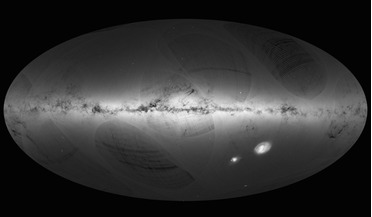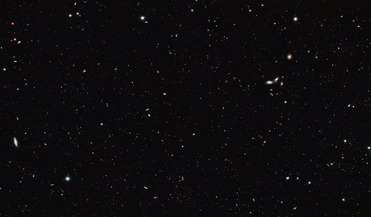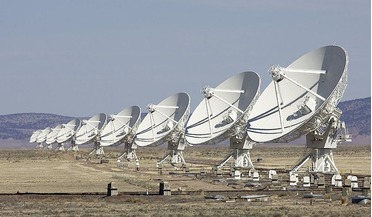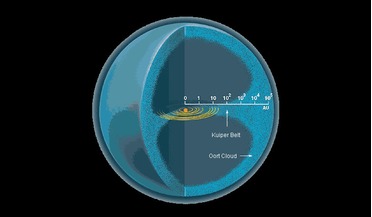 14 September 2016
Gaia's first map hints at big things to come
14 September 2016
Gaia's first map hints at big things to come
... allow scientists to investigate our place in the Universe, from our local neighbourhood, to Galactic and even grander, cosmological scales than ever achieved before.
 14 October 2016
Observable Universe is populated with 10 times as many galaxies as previously thought
14 October 2016
Observable Universe is populated with 10 times as many galaxies as previously thought
... Universe mean that the entire Universe cannot be seen from Earth. The part visible within our cosmological horizon is called the observable Universe. [2] The astronomer Heinrich Olbers argued that the night sky should...
 07 December 2016
Dark matter not as clumpy as previously thought
07 December 2016
Dark matter not as clumpy as previously thought
...,” added the co-leader of the study, Catherine Heymans of the University of Edinburgh. "We see an intriguing discrepancy with Planck cosmology at the moment. Future missions such as the Euclid satellite and the Large Synoptic Survey Telescope will...
 05 January 2017
Astronomers pinpoint location of mysterious fast radio bursts
05 January 2017
Astronomers pinpoint location of mysterious fast radio bursts
... be physically different from the others," cautioned Bryan Butler of NRAO. "We are the first to show that this is a cosmological phenomenon. It's not something in our backyard. And we are the first to see where this thing is happening, in this...
 01 February 2017
Researchers find substantial observational evidence for a holographic Universe
01 February 2017
Researchers find substantial observational evidence for a holographic Universe
... information the team found that some of the simplest quantum field theories could explain nearly all cosmological observations of the early universe – in fact, as much as there is for the traditional explanation of these irregularities using the...
 03 February 2017
Astronomers spot a possible dwarf planet on the edges of the Solar System
03 February 2017
Astronomers spot a possible dwarf planet on the edges of the Solar System
... Survey is an optical survey of 5000 square degrees of the southern sky and despite being used primarily for cosmological purposes, its broad off-ecliptic coverage means it is very well-suited to spotting objects within the scattered...